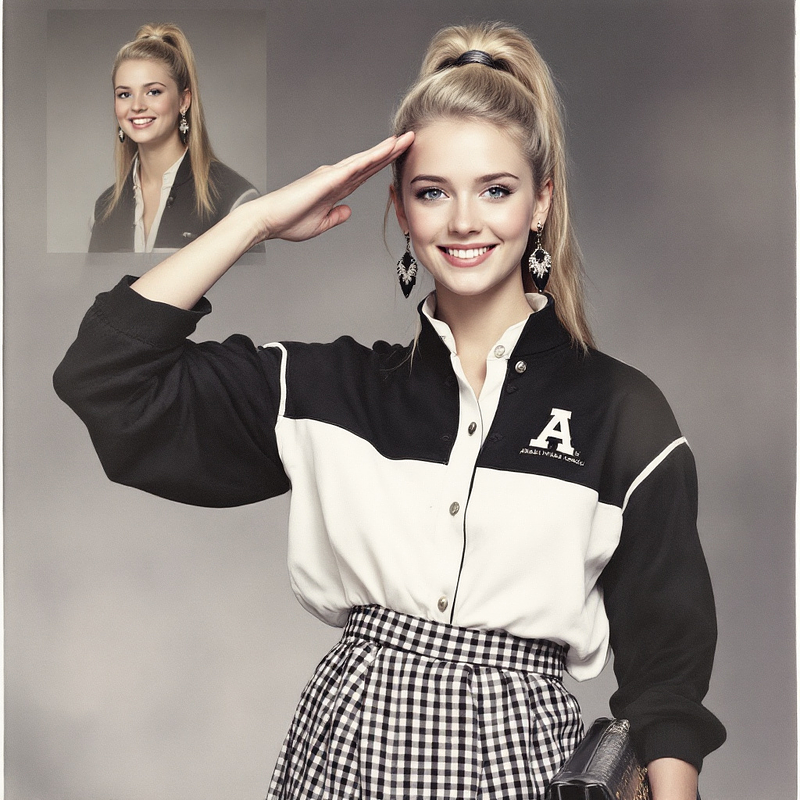
6 months ago
An 80s senior portrait photo with a side-view double exposure in the top left. Subject: Blonde woman in her senior year of high school, with her hair in a high ponytail. She has blue eyes and a friendly smile. In the main photo she is saluting the viewer. In the double exposure she is in a side-view, looking upward. Clothing: The individual in the image is wearing a black and white color-blocked blouse with a sharp collar, paired with a high-waisted, gingham-patterned skirt in shades of black, white, and possibly gray. The blouse has an oversized fit, while the skirt is fitted at the waist and flares out slightly. The individual is also holding a black handbag with a structured design. She is wearing large dangling black and white earrings. In the double exposure image she is wearing a letterman's jacket for Adams High School and holding a tennis racket. In this double exposure her hair is down. Photographic Features Double exposure: The image includes a side view of the woman as a double exposure that is large and overlapping the main image and should fill the upper left quadrant. In traditional film photography, double exposure involves exposing the same frame of film twice. The photographer would first take the main portrait shot. Then, without advancing the film, they would take a second shot of the subject’s face, often with a different lighting setup to create a softer, ethereal look. This would result in both images being superimposed on the same frame. This photo should be feathered to allow the backgrounds still blend together without a harsh background outline. Lighting: The lighting in these photos was typically studio lighting, which was bright and even, minimizing shadows. The superimposed face often had a soft, diffused light to give it an ethereal, almost heavenly glow. Depth of Field: The main image usually had a sharp focus, capturing the details of the subjects. The superimposed face, however, was often slightly blurred or softened to create a dreamy effect and to distinguish it from the main image. Color Grading: The colors in these photos were often vibrant and saturated, typical of the film used during that era. The superimposed face might have a slightly different color tone, often with a bluish or purplish tint to enhance the dreamy, otherworldly effect. Camera Used: These portraits were typically taken with medium-format or 35mm film cameras, which were common in professional photography studios at the time. Film Used: The film used was usually color negative film, which was popular for its ability to capture vibrant colors and fine details. Brands like Kodak and Fujifilm were commonly used. Age of Photo: These types of portraits were particularly popular in the late 70s and throughout the 80s. The fashion styles, hairstyles, and overall aesthetic are strong indicators of this time period. Overall Impression These portraits have a nostalgic charm and are often remembered fondly for their unique and somewhat whimsical style. They capture a moment in time and reflect the photographic trends and techniques of the era.

